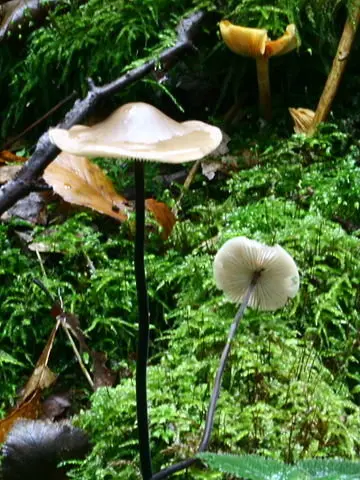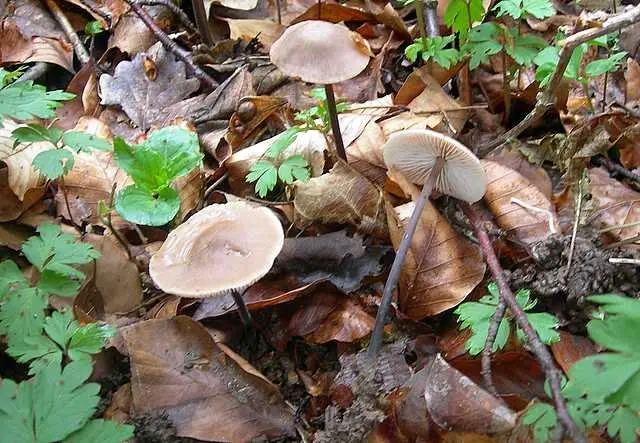Contents
Garlic big (Mycetinis alliaceus)
- Division: Basidiomycota (Basidiomycetes)
- Subdivision: Agaricomycotina (Agaricomycetes)
- Class: Agaricomycetes (Agaricomycetes)
- Subclass: Agaricomycetidae (Agaricomycetes)
- Order: Agaricales (Agaric or Lamellar)
- Family: Omphalotaceae (Omphalotaceae)
- Genus: Mycetinis (Mycetinis)
- Type: Mycetinis alliaceus (large garlic plant)
- Large non-rotten
- Agaricus alliaceus;
- Chamaeceras alliaceus;
- Mycena alliacea;
- Agaricus dolinensis;
- Marasmius alliaceus;
- Marasmius schoenopus
 Garlic big (Mycetinis alliaceus) is a species of mushrooms of the non-gniuchnikov family, belonging to the genus Garlic.
Garlic big (Mycetinis alliaceus) is a species of mushrooms of the non-gniuchnikov family, belonging to the genus Garlic.
External Description
big garlic (Mycetinis alliaceus) has a hat-legged fruiting body. In mature mushrooms, the cap diameter reaches 1-6.5 cm, the surface is smooth, bare, and the cap may be slightly translucent along the edges. Its color varies from red-brown to dark yellow tones, and the color of the cap is paler along the edges compared to its central part.
Mushroom hymenophore – lamellar. Its constituent components – plates, are often located, do not grow together with the surface of the stem of the fungus, are characterized by a grayish or pinkish-white color, have uneven edges with small notches.
The pulp of the large garlicMycetinis alliaceus) is thinned, has the same color as the entire fruiting body, exudes a strong aroma of garlic and has the same sharp taste.
The length of the leg of a large garlic plant reaches 6-15 cm, and its diameter varies between 2-5 mm. It comes from the central inner part of the cap, it is characterized by a cylindrical shape, but in some specimens it may be slightly flattened. The leg is of a rather dense structure, strong, has a grayish-brown, up to black, color. At the base of the leg, a gray mycelium is clearly visible, and its entire surface is covered with a light edge.
The size of fungal spores is 9-12 * 5-7.5 microns, and they themselves are characterized by an almond-shaped or broadly elliptical shape. The basidia are predominantly four-spored.
Grebe season and habitat
big garlic (Mycetinis alliaceus) is common in Europe, prefers to grow in deciduous forests. Grows on rotting beech branches and fallen leaves from trees.
Edibility
Edible. It is recommended to use a large garlic clover fresh, after a preliminary, short-term boiling. Also, a mushroom of this species can be used as a seasoning for various dishes, after crushing it and drying it well.

Similar types and differences from them
The main type of fungi, similar to Mycetinis alliaceus, is Mycetinis querceus. True, in the latter, the leg is characterized by a reddish-brown color and a pubescent surface. The hat of a similar species is hygrophanous, and the hymenophore plates are translucent when the humidity level is too high. In addition, Mycetinis querceus colors the substrate around itself in a white-yellow color, endowing it with a persistent and well-defined garlic aroma. This species is quite rare, it grows mainly on fallen oak leaves.
Other information about the mushroom
A small-sized mushroom with a characteristic smell of garlic is widely used as an original seasoning for various dishes.









